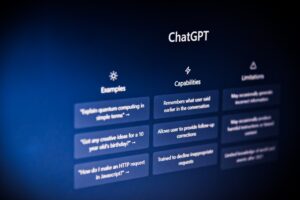OpenAI has already set out on its journey to further enhance its flagship model, GPT-4, with improved features and capabilities in its ongoing rivalry with other firms such as Google and Anthropic. OpenAI launched GPT-4 Turbo, the tech firm’s most advanced LLM yet, in the first week of November 2023, while making the underlying dataset more current and offering attractive pricing cuts to woo developers. GPT-4 Turbo is touted to be more efficient and cheaper when compared to GPT-4, which was launched in March 2023. However, alongside embellishments to GPT-4, OpenAI has also enhanced its GPT-3.5 Turbo model to continue offering it as a competitive option in the ever-evolving market of language model chatbots.
Presently, GPT-4 Turbo still remains in preview for developers with an API account on the platform. A wider release of the model is expected in the forthcoming weeks; however, OpenAI has not come out with a specific date for the same. Since the firm has garnered solid footing in the generative AI space, the reputation of its foundational models has remained consistent, despite a few issues with quality cropping up every once in a while. Regardless, OpenAI has been quick to address these concerns and has also been fairly proactive in listening to its core customer base when making augmentations to existing models and their frameworks. The following sections traverse the more detailed aspects of OpenAI’s GPT-4 Turbo model.
What Makes GPT-4 Turbo Different from GPT-4?

GPT-4 Turbo’s extended context length makes it great for long prompts.
The most striking difference between GPT-4 and its advanced successor is that the latter comes with more recent data, which has a cutoff date of April 2023. Armed with renewed knowledge, GPT-4 Turbo is able to produce more accurate AI-generated content when it comes to events of the recent past. Given that ChatGPT can now also access the internet, this makes things all the more interesting since the chatbot will be able to produce more coherent information while also pulling from real-time sources for those users who choose to use the plugin. Moreover, OpenAI, which had announced the integration of ChatGPT with Dall-E 3, will further capitalize on this feature by linking the cutting-edge image generation protocol with GPT-4 Turbo to make it comprehensively multimodal along with its host of other features.
With AI writing and image generation covered, GPT-4 Turbo will also be able to provide pertinent text-to-speech features, which come with six preset voices functioning on two distinct models, optimized for real-time use and quality. Since Dall-E 3 will be connected to the latest large language model from OpenAI, the chatbot will also be able to “see” and will allow image uploads, which the underlying model will then analyze and work upon based on the user’s prompts. The image-based prompts will foster newer capabilities stemming from existing plugins such as Advanced Data Analysis. Since AI has been pushed as a tool capable of great accuracy when it comes to big data and data analytics, this will be a key offering from OpenAI for the domain. In addition, GPT-4 Turbo also comes with an enhanced context length—now pegged at 128,000 tokens, which is equivalent to 100,000 words. Moreover, GPT-4 Turbo will have a default context length of 16,000, a feature in striking contrast to its predecessor, which had only two windows—8,000 and 32,000.
OpenAI’s Push for Affordable Generative AI: GPT-4 Turbo’s Pricing and Other Attributes

OpenAI’s GPT-4 Turbo model’s affordability might make a significant difference in the present AI market.
In addition to the major improvements and updates OpenAI has launched with GPT-4 Turbo, the tech giant has also slashed the prices for developers in a bid to attract more usage. While 1000 tokens of text input were priced at $0.03 in GPT-4’s case, the same input will be priced at $0.01 while using its successor. GPT-4 Turbo will charge users $0.03 for 1000 tokens of output; similarly, GPT-4 was priced higher at $0.06 for the same. This indicates a threefold decrease in input costs and a twofold decrease in output charges. This makes ChatGPT a more competitively priced model for developers when compared to other potential options, such as Claude 2 or Claude 2.1. Since GPT-4 Turbo will also accept image prompts, pricing for these inputs will be variable and will depend on the size of the image. For instance, OpenAI will charge $0.00765 for a picture with 1080×1080 pixel dimensions. These pricing plans are sure to give OpenAI’s ChatGPT and other services the edge when compared to other language models such as Amazon Titan, among others.
Having optimized the performance of their models, OpenAI has mustered to offer sweeping discounts in pricing, essentially expanding the potential for better business. This is significant because the company has also been on the lookout for efficient chipsets and has considered manufacturing its own to manage timelines and improve productivity. The added efficiency and optimizations will also help the model cut down on untoward occurrences of hallucinations and instances of AI bias, factors that are known to hamper credibility when it comes to AI tools. Following both Microsoft and Google’s footsteps, OpenAI has also come up with a copyright indemnity program for customers who might find themselves in infringement suits upon using the firm’s LLMs. Since AI and copyright have become hot-button issues, OpenAI has stated that it will step in and pay any costs incurred, including its clients’ defense, when it comes to intellectual property claims and other associated litigation.
The Significance of OpenAI’s GPT-4 Turbo

GPT-4 Turbo will transform generative AI, enhancing user interactions and efficiency.
GPT-4 Turbo signals the next step in the progression of OpenAI’s foundational models. Since the firm has been at the forefront of the AI revolution and practically kicked off the AI race, it is now facing global competitors that seek to challenge its dominance in the market. From China’s Tongyi Qianwen and Baidu Ernie to South Korea’s Samsung Gauss, OpenAI is in for a hotly contested market shortly. Regardless, the firm still retains its edge and might continue to retain its hold on the AI market since it seems fairly ahead when compared to most of its competitors. GPT-4 Turbo is an enhancement of an already efficient model and might even further its parent company’s commitment to responsible AI, given that it is more coherent and efficient when compared to its predecessor.
FAQs
1. Is GPT-4 Turbo available?
GPT-4 Turbo is available in its preview versions to developers who have an API account alongside regular GPT-4 access. Customers of Microsoft’s Azure OpenAI Service can also access the advanced LLM, which is once again in its preview stages.
2. Is GPT-4 Turbo cheaper?
Yes, GPT-4 Turbo is nearly three times cheaper for input and two times cheaper for output when compared to the generic GPT-4 model. This is due to the enhanced efficiency of the model’s functioning.
3. Can GPT-4 Turbo generate images?
Yes, since GPT-4 Turbo is integrated with Dall-E 3, it can generate images for a user based on their prompts.
